Three Mountains and Five Gardens collectively refer to the imperial palaces, gardens and parks in western suburb of Beijing. The “Three Mountains” refer to the Fragrant Hills, the Jade Spring Hill, and the Longevity Hill, and “Five Gardens” refer to Jingming Garden, Jingyi Garden, Qingyi Garden (Summer Palace), which were built leaning the mountains, and neighboring Changchun Garden and the Old Summer Palace. It’s very unforgettable to have a visit to the fine view that the ancient Emperors enjoyed in early autumn.
Recommended route: Fragrant Hills - Jingyi Garden (Fragrant Hills) - Longevity Hill - Jade Spring Hill (Jingming Garden) - The Old Summer Palace - Changchun Garden (The Old Summer Palace)
Fragrant Hills
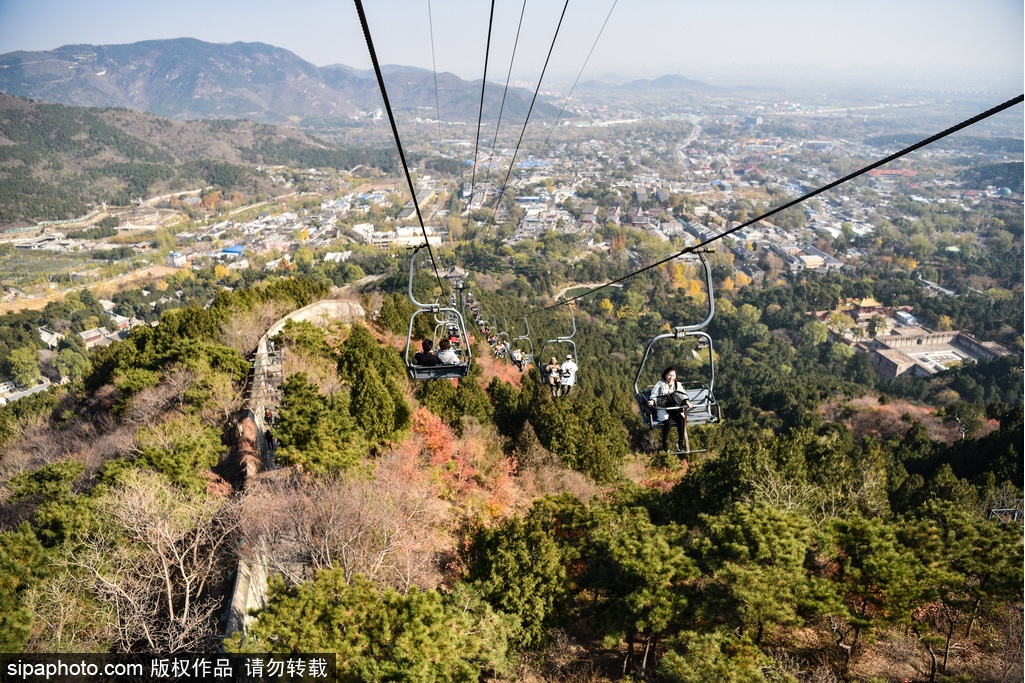
With an area of 188 hectares and steep terrain and continuous green scenes, the Fragrant Hills Park is situated in western suburb of Beijing, which was used to be a royal garden. The highest peak in the park is Xianglu Peak (Incense Burner Peak), a 557m hill dubbed the “Guijianchou Peak” literally meaning the Peak Ghost will be feared.
Enjoying a history of nearly 900 years, the park was built in the 26th year under the reign of Emperor Dading of the Jin Dynasty. Apart from the numerous cultural relics and historic sites, Fragrant Hills Park also boasts pavilions, terraces and towers, scattering like stars among mountains and forests. Other attractions include the Sunny Western Hills after Snow which is reputed among the Eight Scenes in Ancient Peking, the Biyun Temple (Temple of Azure Clouds) featuring the architectural style of Ming and Qing dynasties, the one and only existing gold-plated wooden Five Hundred Arhats in China, the Zhaomiao Temple (Bright Temple) which was used for a temporary imperial palace of the 6th Panchen, and the elegant Jiangnan-style Jianxin Temple (Study of Reading Heart).
Ticket: 80 yuan
Address: No. 40, Maimai Street, Fragrant Hills Park, Haidian District 海淀区香山公园买卖街40号
Jingyi Garden (Garden of Tranquility and Pleasure)

Jingyi Garden is located on Fragrant Hills, the northwest suburb of Beijing. The structure of the whole garden descends along the hillside, which is divided into three parts of the internal park, the external park and the separation park. The internal park is situated in the half-slope of the southeast part, where main scenic spots and buildings are located including imperial palaces and the ancient Fragrant Hills Temple and Hongguang Temple, with natural landscapes such as Yingluo Rock scattered throughout.
The external park is the alpine region of the Fragrant Hills, with vast areas distributed with 15 scenic spots, most of which are optimal venue for appreciation of natural scene and small garden buildings constructed in accordance with spot scenes. The separation park is situated in the north of the garden, including two buildings of Zhaomiao Temple and Zhengning Hall. The northwestern area of the internal park is vast swathes of smoke trees which will turn red during late autumn, dyeing the whole forest in beautiful colors. This is a major eyeful in Jingyi Garden.
Address: Fragrant Hills, the northwest suburb of Beijing 北京西北郊香山
Summer Palace
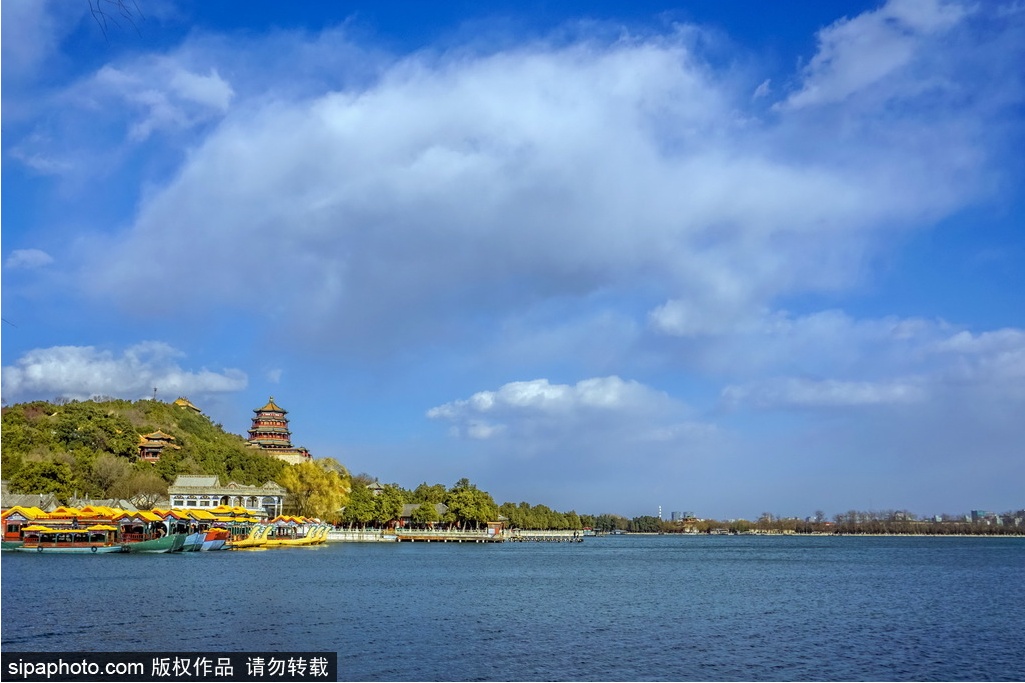
As a major national historical and cultural site in China, the Summer Palace lies northwestern outskirts of Beijing, west of the Old Summer Palace and east of Jade Spring Hill. It covers a total area of 290 hectares, three quarters of which is occupied by Jar Hill (later renamed Longevity Hill) in the north part, making itself a natural landscape garden combining mountains and waters while dominated by waters.

The Summer Palace epitomizes traditional Chinese garden-building techniques. Embraced by mountains and lakes, it features the grandeur of Chinese imperial garden as well as natural beauty, highly reflecting the gardening theory of “man-made yet natural”.
The main attractions in the park can be roughly divided into three areas. The first is the area for political affairs represented by the solemn and majestic Hall of Benevolence and Longevity, which was the main place for Empress Dowager Cixi and Emperor Guangxu to deal with internal affairs and diplomatic political activities in the end of the Qing Dynasty. The second is the living area where Empress Dowager Cixi, Emperor Guangxu, empresses and imperial concubines lived, represented by the Hall of Joy and Longevity, Hall of Jade Billows, and Yiyun Hall. The third is the vast area for the emperor, empresses and imperial concubines to stroll around and spend leisure time that is formed by the Back Hill and the area along and west of the Long Corridor.
Ticket: 30 yuan in peak season (60 yuan for ticket package), 20 yuan in off season (50 yuan for ticket package)
Address: No.19, Xinjiangongmen Road, Haidian District 海淀区新建宫门路19号
Longevity Hill
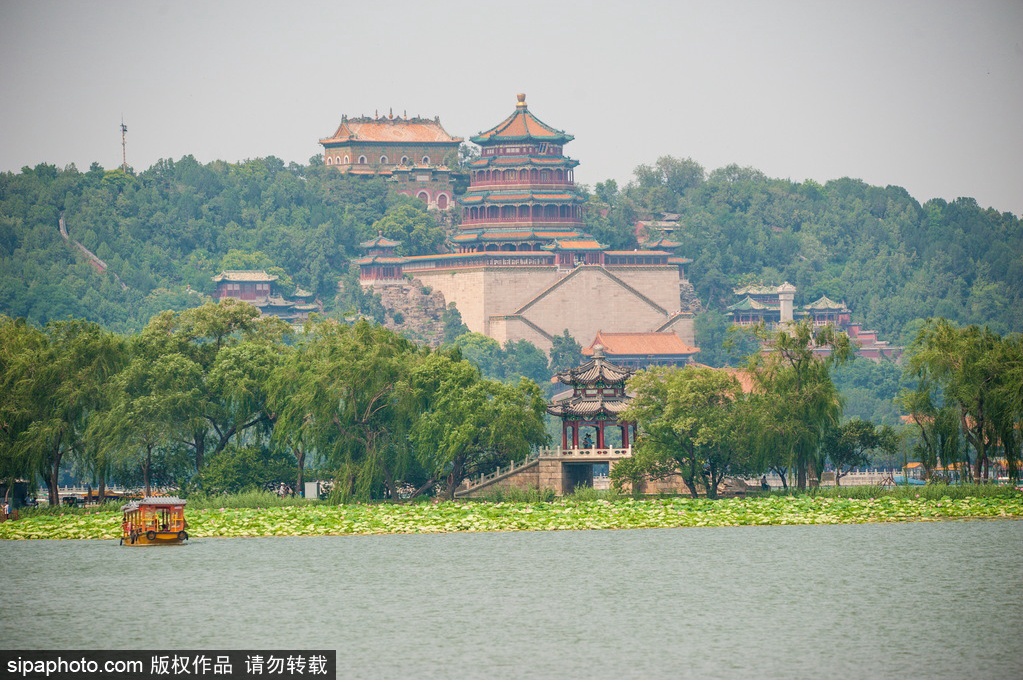
At an altitude of 108.94m, Longevity Hill, adjacent to Kunming Lake, is the extension of Yanshan Mountains, with a height of 58.59m. In the 15th year (1750) under the reign of Emperor Qianlong of the Qing Dynasty, to celebrate the 60th birthday of the Empress Dowager, the Tempe of Gratitude for Longevity was built at the old site of Yuanjing Temple. The hill was renamed to Longevity Hill next year. In addition, the soil obtained via excavating Kunming Lake was stacked on the hill based on the layout of landscape, making the east and west slopes of the hill gradual and symmetrical, therefore this hill became the main part of the whole Summer Palace.
Buildings were constructed along the hill and later burned down during the war in the late Qing dynasty. The existing buildings are rebuilt ones according to the order of the Empress Dowager Cixi. Rising from the foot of the hill, there are Yunhui Yuyu Gate, Gate of Dispelling Clouds, Ergong Gate, Hall of Dispelling Clouds, Hall of Dehui, Tower of Buddhist Incense, Hall of Dispelling Clouds, and the Sea of Wisdom on the summit, forming an ascending central axis. Present-day Longevity Hill was called Jar Hill in the Yuan Dynasty. With magnificent buildings and the white marble fishing platform that extends into the lake, Longevity Hill was frequented by emperors in the Yuan Dynasty for rafting and fishing.
Jingming Garden (Jade Spring Hill)
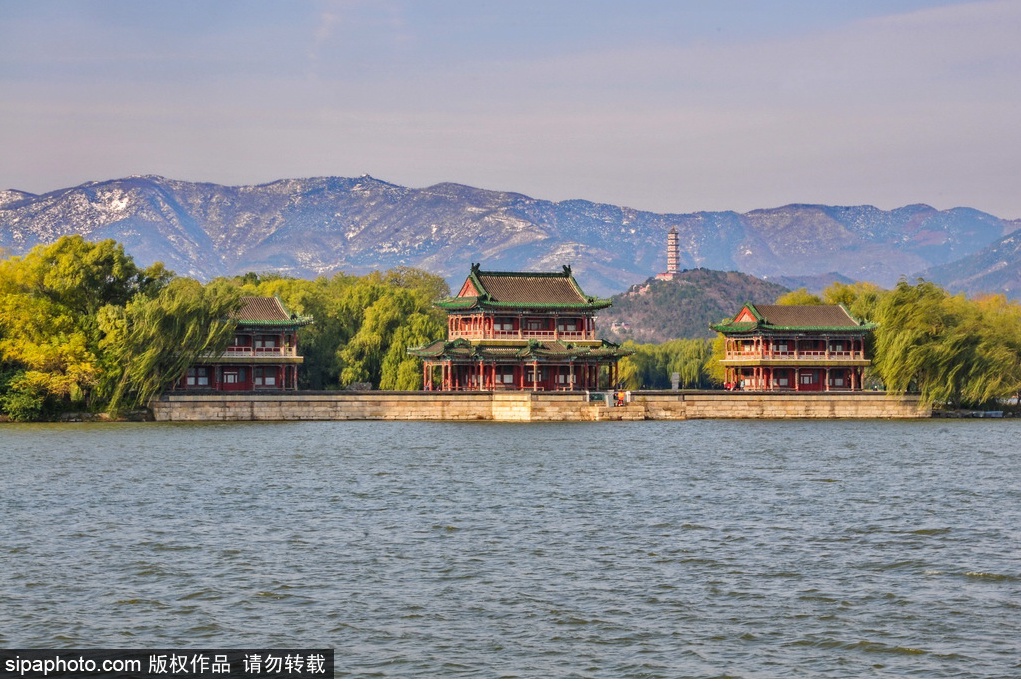
Jingming Garden (Jade Spring Hill) is a culture relic protection site of Beijing Municipality. It is located in the west of Kunming Lake of the Summer Palace in Haidian District, northwest of Beijing. Jingming Garden is with an area of 75 hectares, of which 13 hectares is covered by water.
First built in the Jin Dynasty, it was called Lotus Palace (Furong Palace) and Jade Spring Palace then. Huayan Temple was built here in under the reign of Emperor Zhengde (1506-1521) of the Ming Dynasty. During the Qianlong period, the large-scale expansion gave the birth to the “Sixteen Scenes of Jingming Garden”, which was the heyday of the Jingming Garden. It was burn down by Anglo-French Allied Force and Eight-Nation Alliance in 1860 and 1900 respectively. Then, it became Jade Spring Hill Water Company after the Revolution of 1911 and was opened to the public.
The garden features abundant sceneries and representative examples include the Jade Spring which was named to be “the best spring in the world” by Emperor Qianlong, the Spouting Jade Spring under Rainbow, one of Eight Scenes of Ancient Yanjing in the Jin Dynasty, the Jade Hill Tower in the main peak of Jade Spring Hill, a 477m octagonal seven steps wood-like loft style stone tower, the Shadow of Tower on the Jade Peak, one of Sixteen Scenes of Jingming Garden, the Huazang Tower, an octagonal seven steps dense eaves type white marble stone tower, the 6m-high Chengzhao Pass, and the Lanka Cave, a cave with esoteric Buddhism bas-reliefs on precipices with high artistic value.
Address: west of Kunming Lake of the Summer Palace, outside the east gate of Jade Spring Hill Scenic Area, Haidian District 海淀区玉泉山小东门外,颐和园昆明湖西
Old Summer Palace
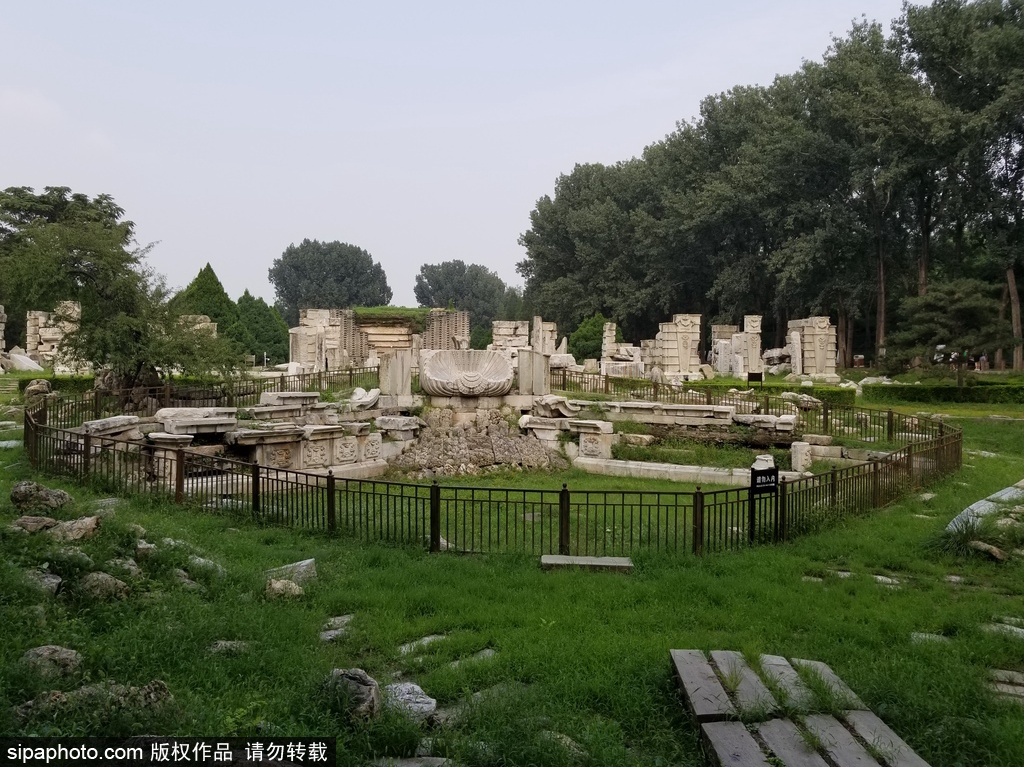
Royal gardens of the Qing dynasty usually integrate the essence of various gardens from home and abroad, and present changing views and characteristics of famous gardens, such as Xiyuan Sanhai (now Zhongnanhai), the Old Summer Palace, and the Qingyi Yuan (Garden of Clear Ripples). But the Old Summer Palace is especially prominent.
It enjoyed a good reputation all over the world with its large scale, outstanding construction techniques, splendid building complex, and rich cultural collections. The garden inherited the tradition of Chinese royal gardens of more than 3,000 years. It featured elegance and luxury of royal architectures, and the gentleness and gorgeousness of gardens in the south of the lower reaches of the Yangtze River. In the meantime, it also learned from the style of European gardens. The overall layout is harmonious and perfect, symbolizing the high level of construction techniques of Chinese ancient gardens.
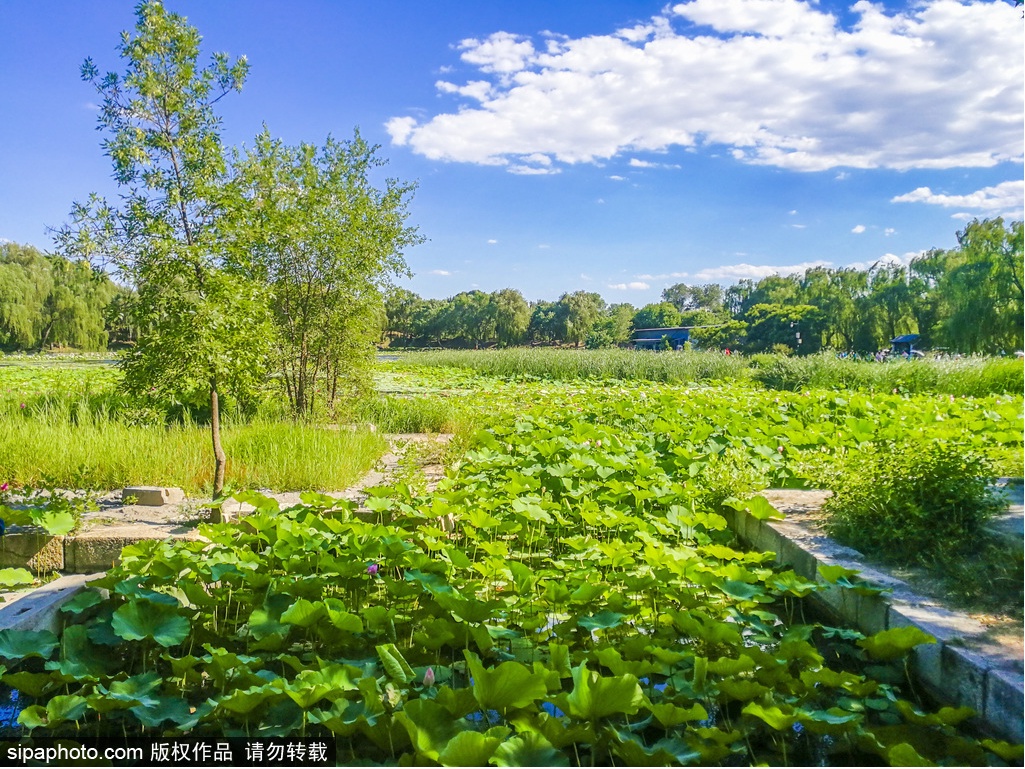
The Old Summer Palace was a gift for Emperor Kangxi’s fourth son, Yongzheng. At that time, it was outclassed by Changchun Garden. Later the Emperor Yongzheng ascended the throne, and greatly expanded the imperial garden. Unfortunately, owing to the wars in the end of the Qing Dynasty, we cannot witness its glory with our eyes, but it can be learned from the literatures.
Address: No. 28, Qinghua West Road, Haidian District 海淀区清华西路28号
Changchun Garden

Changchun Garden highlights garden landscape of which buildings are simple in design, featuring small round ridge roofs and tile roofs. In addition to the masonry walls made of tiger-skin stones rather, the mountains here were piled up with small mounds on flat ground. With plenty of ancient trees and vines planted in the Ming Dynasty, the garden also cultivates such flowers and trees as wintersweet, clove, magnolia, peony, peach, apricot and grape. The forest is scattered with elks, white cranes, peacocks and bamboo partridges, forming secluded scenery. The natural and simple gardening style of Changchun Garden affected other royal palaces that were completed after it, such as the Summer Resort and the Old Summer Palace (before the expansion of Emperor Qianlong).
Address: west of Peking University, south of the Old Summer Palace, Haidian District 海淀区圆明园南,北京大学西




